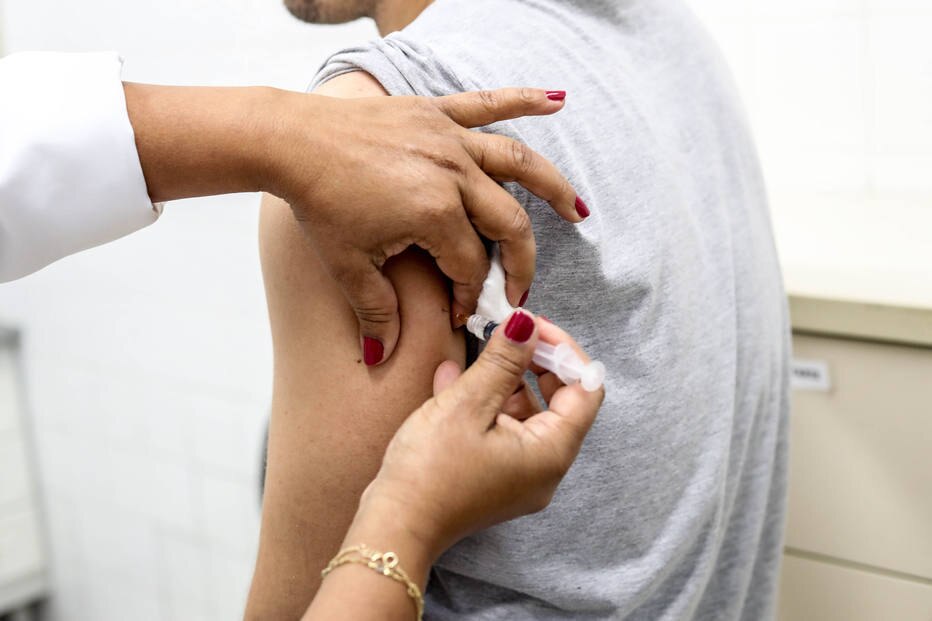
[ad_1]
BRASÍLIA – Threatened to lose the certificate of elimination of measles due to the return of the disease last year, Brazil is now faced with another risk: that of cope with the multiplication of cases of diphtheria without any available treatment.
In the inventories of Department of Health only 12 treatments can be used in severe cases. This amount can serve a slightly larger number of people – provided the board is at a less advanced stage. But the record itself admits that the number is low and in January he asked the Pan American Health Organization ( Opas ) for 200 treatments to treat diphtheria. Without this, the patient may die.
The decline in immunization coverage against diphtheria has been recorded over the past four years. Preliminary data from 2018 show that only one state, Ceará presented acceptable vaccination coverage, greater than 90%.
The situation, by itself, would already be worrying. But the scenario worsens dramatically when one considers that neighboring countries are facing epidemics of infection. With an increase in cases of the disease since 2016, Venezuela recorded 1,102 suspected cases last year. 46 have already been registered this year, of which 264 were confirmed in 2018 in Haiti and 6 in Colombia.
Parallel to the increase in the number of sick people in the Americas, coverage in the northern region, gateway for many migrants, is considered very low. In Roraima, the vaccination rate is 66%. In Acre, it is 60% and in the Amazon, 77%. Amapá has 55% and Rondônia, the best-performing state in the region, has 85%. Pará, with the worst performance, has a coverage of 49%.
Diphtheria is an infection caused by a bacterium, transmitted by coughing, sneezing, or contact with contaminated objects or clothing. The symptoms of the infection appear two to five days after exposure. Usually this happens gradually, with a simple sore throat. "As the disease progresses, the bacteria begin to produce a toxin, which can cause blockage of the airways, inflammation of the nerves and myocardium," says Oswaldo Cruz Foundation researcher Claudio Maierovitch.
Available vaccines protect against the action of the toxin. The serum used in the treatment of the toxin is prepared from antibodies derived from horses. The reduction in stocks is due to serum protection potential problems, which are smaller than the standardized one identified a few years ago.
"Once the difficulties were identified, the solution was to centralize the distribution of the serum," says Maierovitch, who served as director of the Department of Communicable Disease Surveillance at the Ministry of Health. the last case history of the disease. In 2015, they were 16. The following year, there were 4 and in 2017, 5. "But faced with cases in other countries and with declining immunization coverage, the risk increases" explains the researcher.
Maierovitch finds it difficult for Brazil to have a diphtheria outbreak in the same proportions as Venezuela or Haiti. "There is a good surveillance system, able to identify cases and block them through the use of antibiotics," he said. Nevertheless, the researcher from Fiocruz stresses the need to take preventive measures. Strengthen strategies to increase immunization coverage, search for unvaccinated individuals and travel to the field, especially in areas considered more vulnerable.
The fact that northern states are faced with reduced care, reflecting changes in doctors, can be a complication, says Maierovitch. "The treatment of diphtheria is work, surveillance, blockage, areas where there is a lack of professionals are more vulnerable, but they are more distant, they may be less exposed to the bacteria." But if you lucky enough to get there, you'll have a problem. "
Last week, Opas issued a statement warning travelers to countries where there was a diphtheria outbreak. The recommendation is also made for health professionals. In the alert, Opas also recommends the supply of diphtheria antitoxin and strengthening surveillance systems.
The Ministry of Health warns of the need to update the vaccination record. (F, b, e, v, n, t, s) {if (f.fbq) returns; n = f.fbq = function () {n.callMethod? n.callMethod.apply (n, arguments): n.queue.push (arguments)}; if (! f._fbq) f._fbq = n; n.queue = n.loaded = 0; n.version = 2.0 & # 39 ;; n.queue = []; t = b.createElement (e); t.async =! 0; t.src = v; s = b.getElementsByTagName (e) [0]; s.parentNode.insertBefore (t, s)} (window, document, script, // connect.facebook.net/en_US/fbevents. fbq (& # 39; init & # 39; ;, & # 39; 1659995760901982 & # 39;); fbq (& quot; Track & # 39; PageView & # 39;);
[ad_2]
Source link